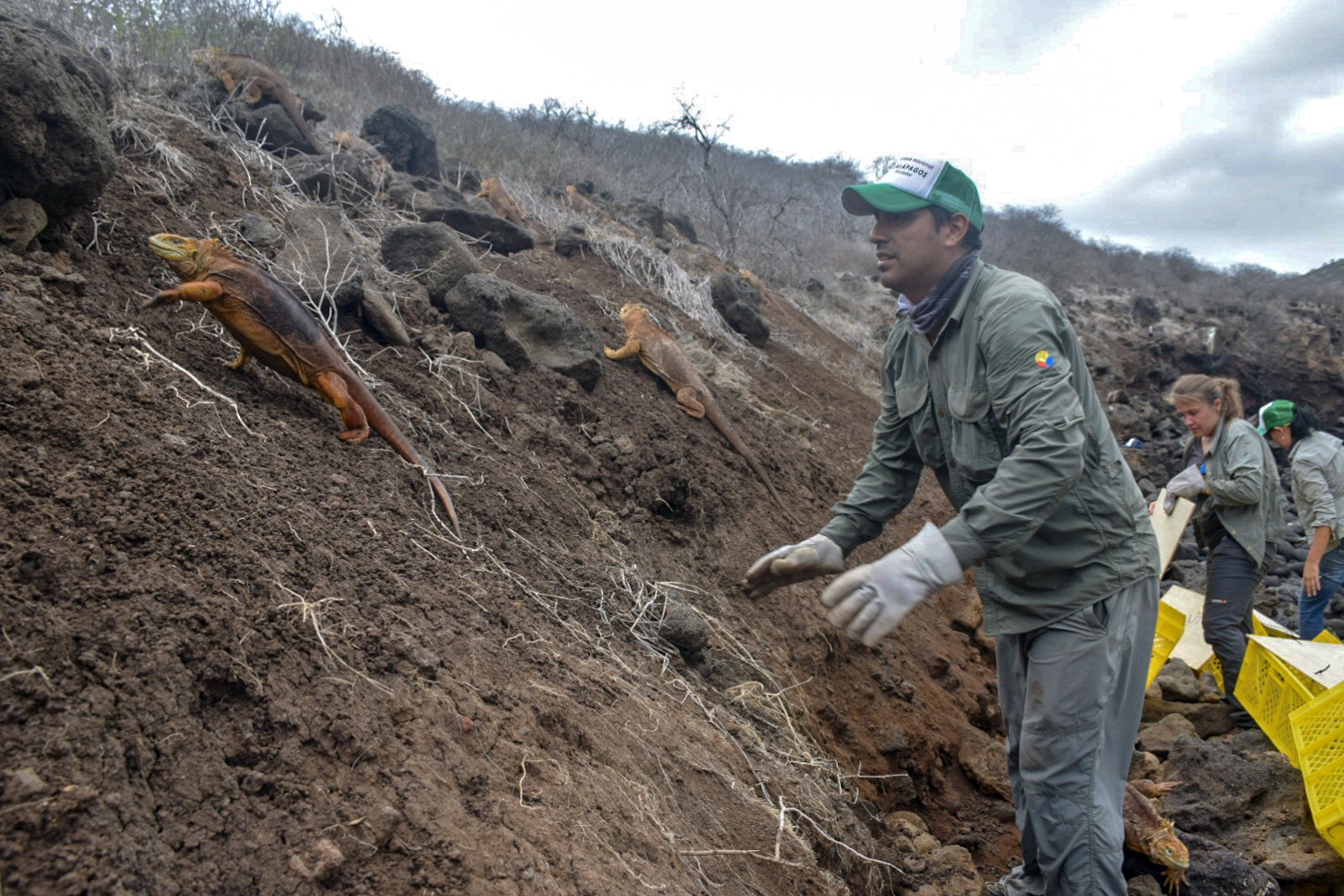
QUITO, Ecuador (AFP) – A group of more than 1,400 iguanas have been reintroduced to an Ecuadoran island in the Galapagos archipelago around two centuries after they disappeared from there, authorities said on Monday.
The Galapagos land iguanas from North Seymour Island were freed onto Santiago Island as part of an ecological restoration program, the National Galapagos Park authority said in a statement.
The last recorded sighting of iguanas in Santiago Island had been made by British naturalist Charles Darwin in 1835.
“Almost two centuries later, this ecosystem will once again count on this species through the restoration initiative,” said the park authority.
Its director, Jorge Carrion, said the iguanas became extinct due to the introduction of predators such as the feral pig, which was eradicated in 2001.
The program is also aimed at protecting the population of iguanas on North Seymour, said to number around 5,000, where food is limited.
“The land iguana is a herbivore that helps ecosystems by dispersing seeds and maintaining open spaces devoid of vegetation,” said Danny Rueda, the park authority’s ecosystems director.
The Galapagos archipelago, some 600 miles (1,000 kilometers) from the Ecuador coast, contains unique wildlife and vegetation, and is a Unesco World Heritage site.
But it has one of the most fragile ecosystems in the world.
© Agence France-Presse







